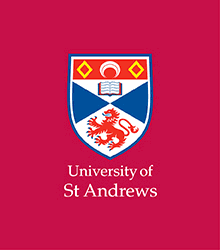The city of Florence today celebrates the feast of a native son named Peter (1020 ca. – 1089), as does the Vallombrosian order of Benedictine monks to which he belonged. He is traditionally said to have belonged to one of the city’s most prominent families, the Aldobrandini, but there is much uncertainty about this. (This is the family of Pope Clement VIII, who reigned from 1592-1605, and for whom the Clementine Vulgate is named.) The Roman martyrology states that St Peter has the nickname “Fiery (igneus), because he passed through fire unharmed”, while strangely giving no further explanation of the very impressive and well-documented miracle by which he earned it.
 |
| A portrait of St Peter, made in 1585 in the sacristy of the church of St Bartholomew in the Ripoli area of Florence. This church became the city’s second Vallombrosian monastery in 1187. (Photo from Wikimedia Commons by Sailko, CC BY 3.0. All other images in this article are by the same author, and reproduced under the same Creative Commons license.) |
The Vallumbrosians were founded in 1039 by another Florentine,
St John Gualbert (995-1073), as part of the great reform movement then sweeping through the Church. One of the most serious problems of that era was the widespread practice of simony, which brought many unworthy or negligent shepherds to ecclesiastical office, both high and low. St John’s congregation were leaders of the opposition to simony, especially among monks, and had great success in reforming Benedictine abbeys by populating them with their own members, and turfing out simoniac abbots.
In 1062, another Peter, surnamed “Mezzabarba – half-beard”, a native of Pavia in Lombardy, became archbishop of Florence, but five years later, he was accused of acquiring this position by simony. He denied the charges vehemently, and had the support of many of the ruling nobles, but the citizenry, by now very much imbued with the spirit of reform, demanded that he proved his innocence in a trial by ordeal. It was therefore determined that since the Vallumbrosians were among his leading accusers, one of them would walk through two huge pyres set very close to each other.
Peter Aldobrandini was chosen by the abbot of the order’s Florentine house as their representative. On the day appointed for the ordeal, he celebrated Mass in a public square, with a very large crowd in attendance, then removed his chasuble, and offered a prayer to God to bear witness to His detestation of simony by protecting him as he passed through the flames. Then, making the sign of the Cross, and picking up a crucifix, he walked through the fire completely unharmed. An eyewitness account, preserved in a letter sent by the Florentines to Pope Alexander II (another of that age’s great reformers, the predecessor of St Gregory VII), states that the flames filled Peter’s alb, but not even the smallest of his hairs was singed. This was immediately accepted as validation of the accusation against Mezzabarba, who was soon deposed from his see by Pope Alexander. (Later, having repented of his sins, he ended his days as a Vallumbrosian monk.)
 |
| The ordeal of St Peter the Fiery, represented on the doors of a cabinet in the Vallombrian monastery of St Michael the Archangel in Passignano, where St John died in 1073. (Image from Wikimedia Commons.) |
Peter Aldobrandini became an abbot, but was then summoned to Rome by Gregory VII, who made him cardinal-bishop of Albano, one of the seven suburbicarian sees. He died on this day in 1089, after serving as papal legate in Italy, France and Germany.
In 1057, Pope Stephen IX had given the same title, in the see of Ostia, to another great reformer of the era,
St Peter Damian, as a sign of papal approbation of the ongoing movement to free the Church from the many evils that beset it. It therefore fell to the latter to crown Alexander II in 1061, the clearest possible indicator that the papacy, which had wallowed in corruption and moral squalor for decades, had turned the corner very sharply indeed.
As I have explained before, this was a development that no one could have reasonably hoped for two decades earlier, when the throne of Peter was occupied by the infamous Benedict IX, over whose career we draw a veil, as the sons of Noah drew a veil over their father’s nakedness. I make bold to say that these are lessons well worth remembering by those of our own day who long for authentic reform within the Church.
The Vallumbrosian church of Florence, San Salvi (about 1¾ miles east of the cathedral), which they took over in the mid-11th century, under St John’s leadership, stood well outside the city walls in the middle of an open field. At the beginning of the 16th century, a sculptor from the nearby city of Pistoia, Benedetto Grazzini (usually known as “Benedetto da Rovezzano”, after the Florentine neighborhood where he lived) was commissioned to make a new monumental tomb in the church for the order’s founder; it was completed in 1515. Unfortunately, in 1529-30, while Florence was under siege by the troops of the Holy Roman Emperor Charles V (many of them from the newly protestantized parts of Germany), the unprotected church and monastery were sacked, and the monument very badly damaged. Several pieces of it survive, including a long narrative relief that shows the episode of St Peter the Fiery. They are now displayed in the convent building next to the church, which has long been a museum. (All following images from this page of Wikimedia Commons:
https://commons.wikimedia.org/wiki/Category:Peter_Igneus)
St Peter celebrates Mass before the ordeal begins.
The crowd in attendance (some of whom are clearly not very confident about the outcome of the ordeal...)
St Peter walks through the flames.
Two scenes of the aftermath of the ordeal; the figure in the foreground prostrated before St Peter is, of course, the convicted simoniac bishop.




.jpg)
.jpg)
.jpg)
.jpg)
.jpg)
.jpg)



















